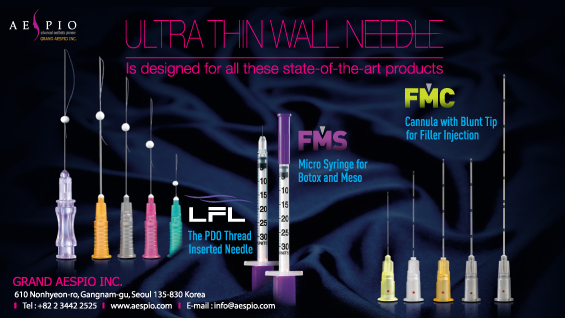Dr. Kim Hongseok of Cheongju Wyne Dermatology Clinic is a specialist of aesthetic dermatology with one of the largest private dermatologist practices in Korea. Dr. Kim is especially interested in the effect of cosmetic products on the skin and attends trade fairs around the world to gather information. He is also creating a database for cosmetic product ingredients commonly used by his patients and risk of allergic responses. He believes that the right cosmetic product can also help improve the patient’s skin conditions along with medication and laser therapy. We hope that this article provides useful information to our readers interested in skin care with cosmetic products.

Effective moisturization of the skin is easier said than done. Doctors often emphasize the importance of moisturization to their patients but they also need to be aware of the actions of various ingredients and components of moisturizing products. Skin moisturizers can be divided into three types; occlusive, humectant, and emollient. An important aspect of moisturization is cleansing. The skin should not be stripped of natural moisturizing factors (NMF). However, people tend to cleanse their skin excessively, removing NMF along with impurities. Numerous moisturizers are available in the market but none can quite mimic the action of NMF. Therefore, NMF can be said to be the most effective moisturizer. Humectants or occlusives increase the water content of the stratum corneum and the emollient smooths the rough skin texture to complete the process of topical moisturization. Most moisturizers of today contain both a humectant and occlusive.
Humectants
A humectant is a water-soluble substance that is easily absorbed into the stratum corneum providing hydration. At the relative humidity of over 80%, it attracts ambient moisture into the skin and under normal conditions, it pulls up the moisture from the dermis to epidermis to maintain hydration. However, at a very low relative humidity, a humectant steals moisture from the deep epidermis and dermis to hydrate the skin surface, thereaby leaving the deeper layers of the skin dry. Eventually, the overall skin becomes drier. Therefore, humectants must be combined with occlusives for balanced moisturization.
Humectants increase the water content of the stratum corneum, thereby softening the skin texture and improving fine lines. Humectants can be found in most anti-wrinkle creams but its anti-wrinkle effect is only short-lived.

Image 1. A humectant’s action in the skin.
Glycerin
Glycerin is the most effective humectant and consists of components similar to NMF. Glycerin can maintain a high level of hydration of the skin in a dry environment. The levels of glycerol have been associated with moisture levels of the stratum corneum. It plays an important role in increasing the water content of the stratum corneum. Using glycerin-rich cosmetic products can help a dry skin restore the normal moisture level.
Glycerin infiltrates into the skin through the aquaporin channel. A study in murine epidermis lacking aquaporin-3(AQP-3) channel showed that glycerin could not be absorbed into the skin, resulting in abnormal SC hydration and low SC glycerol levels. Glycerin is an effective humectant but a high content of glycerin can give the product a heavy and sticky texture. This can be improved by combining other humectants such as hyaluronic acid or PCA (sodium Pyrrolidone Carboxylic Acid).
[Advertisement] ULTRA THIN WALL NEEDLE – Manufacturer: AESPIO(www.aespio.com)
-To be continued-




















